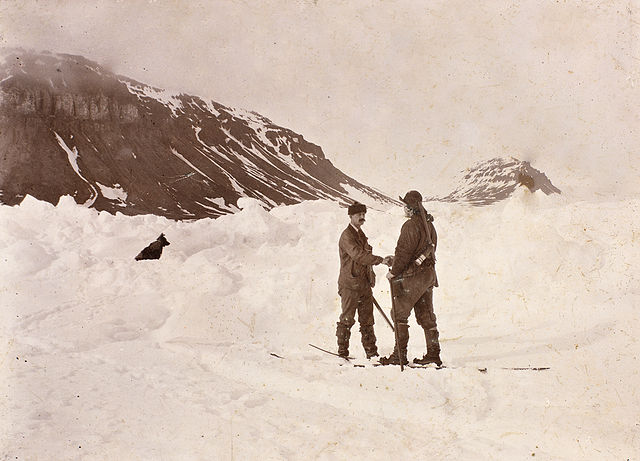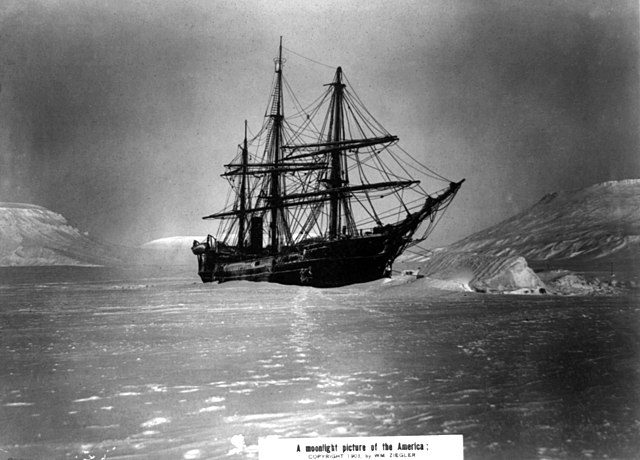Jackson–Harmsworth expedition
The Jackson–Harmsworth expedition of 1894–1897 to Franz Josef Land was led by British Arctic explorer Frederick George Jackson and financed by newspaper proprietor Alfred Harmsworth. Jackson had been misled by speculative maps into believing that Franz Joseph Land was a land mass that extended to the North Pole. The survey which was the main work of the expedition eventually proved that the land was in fact an archipelago, whose northernmost island did not extend beyond 82° N.
View of Elmwood in 1896. Photo by Fridtjof Nansen
The Nansen–Jackson meeting at Cape Flora, 17 June 1896 (a posed photograph taken hours after the initial meeting)
Franz Josef Land is a Russian archipelago in the Arctic Ocean. It is inhabited only by military personnel. It constitutes the northernmost part of Arkhangelsk Oblast and consists of 192 islands, which cover an area of 16,134 square kilometers (6,229 sq mi), stretching 375 kilometers (233 mi) from east to west and 234 kilometers (145 mi) from north to south. The islands are categorized in three groups separated by the British Channel and the Austrian Strait. The central group is further divided into a northern and southern section by the Markham Sound. The largest island is Prince George Land, which measures 2,741 square kilometers (1,058 sq mi), followed by Wilczek Land, Graham Bell Island and Alexandra Land.
Austro-Hungarian North Pole Expedition
The Nansen–Jackson meeting at Cape Flora, 17 June 1896 (a posed photograph taken hours after the initial meeting)
The Stella Polare was trapped and threatened to sink. The crew were obliged to land with the utmost haste and to secure materials for building a dwelling.
America anchored at Tepliz Bay





